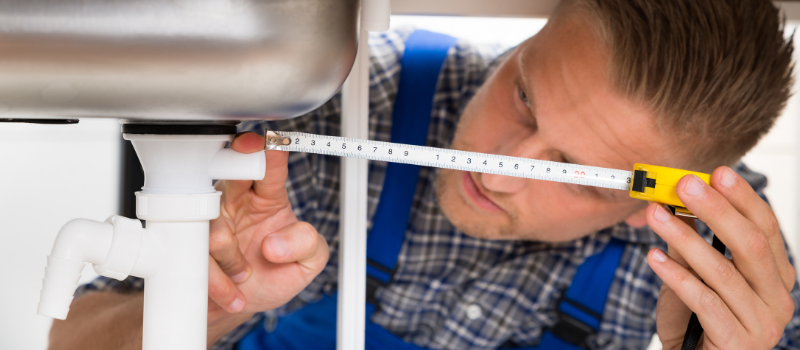Making sure you have the right pipe size and pipe fitting measurements is key. It can add unnecessary delays to work if you don’t have the correct measurements.
The question you are probably asking right now is, where do I even start with measuring pipes and fittings? Well, we have put together a little guide on how you do it, along with other key information.
What are pipe fittings?
Pipe fittings are an essential part of most plumbing work. They allow you to connect pipework together and alter the flow of the pipe.
They are available in various sizes and angles that allow you to easily adjust the direction, speed or flow rate of a pipe. This allows you to easily arrange pipework to fit your space and requirements.
Types of pipe fittings
Choosing a pipe fitting is complicated further by the vast range of options you have available to pick between.
- T and Y Fittings – these fittings are used to connect three pieces of pipe and split the flow. A tee is often in the shape of a ‘T’ at a 90-degree angle and their inlets and outlets. Wye fittings are ‘Y’ shaped with two inlets coming together roughly at a 45-degree angle.
- Cross Fittings – consists of four openings, one inlet and three outlets and three inlets and one outlet. These are less common and are often used in some irrigation and sprinkler applications.
- Elbow Fittings – these are often used to change the angle of the pipework. Often have 90-, 60-, 45, or 22.5-degree bends. They can be used to move around obstructions in the pipe run.
- Coupling and Adapter Fittings – used to connect two pipes. A coupler connects two different pipes. An adapter is used to add another fitting into the pipework.
- Bushing fittings – used to connect two pipes of different sizes. The larger diameter of the bushing fits inside of the larger pipe. The smaller pipe will then be inserted into the smaller diameter.
- Union Fittings – like coupling fittings in the way they connect two similar pipes. A nut or threaded ring in the middle of the fitting will tighten to join two pipes. This can be easily removed by loosening the ring to disconnect connected pipes.
- Trap Fittings – often found underneath kitchen or bathroom sinks, these are horizontal dips or bends in drainage pipes. Shaped either as ‘U’ or ‘P,’ they will trap drain water in the arc to create a barrier that prevents sewer gases from rising into the home. These traps also catch debris to avoid clogging.
- Cap Fittings – cap fitted over the end of the pipe to stop the flow of water or gas. They can either be used as a permanent or temporary solution.
- Plug Fittings – used similarly to cap fittings as they seal an opening. The difference between a plug and a cap is the plug fits into the threaded pipe opening to make the seal while cap fittings fit over an opening.
- Nipple Fittings – a short section of pipe that is male-threaded at each end and used to connect two female-threaded pipe ends.
What equipment do you need to measure a pipe and fitting?
When measuring a pipe or pipe fitting, you will need a couple of tools to ensure you can do it accurately.
First, you will need a flexible measuring tape that can measure the size of the pipe. You will also need a ruler or calliper to measure the diameter of the pipe fittings.
If this is your first time doing this, it may be handy to have a second pair of eyes with you to double-check your measurements to save any stress later in the process.
How to measure pipe fittings
There are three simple steps you need to follow to ensure you get accurate pipe size readings:
Check if the pipe has male threads, female threads or no threads at all. Threads are the grooves on the end of the pipe. Female threads are on the inside, and male threads are on the outside.
Find the outside diameter of the male thread or no thread. The outside diameter is from one outside edge to the other outside edge across the pipe.
Measure the female threads inside diameter. This will be the distance across the middle of the pipe but doesn’t include the thickness of the pipe walls. Using a ruler or calliper, measure from one inside edge to the other inside edge.
How to measure pipe size
This is an important step as if you don’t measure this correctly then your work will be delayed as you will have to go back and get the right size.
To measure you pipe size you will need to measure the inside diameter of the pipe. This is done from the inner mark of the thickness of the pipe rather than the outer mark.
You will find that most pipes and fittings will have their measurements on the pipe.
Hopefully, this has answered your pipe and fittings questions, and you now feel confident enough to pick up that measuring tape and start assembling your next pipework project.
If you’d like to find out more about the pipe fittings, we have available, please contact our sales team on 01777 858009 or email sales@kingfisherdirect.co.uk.

